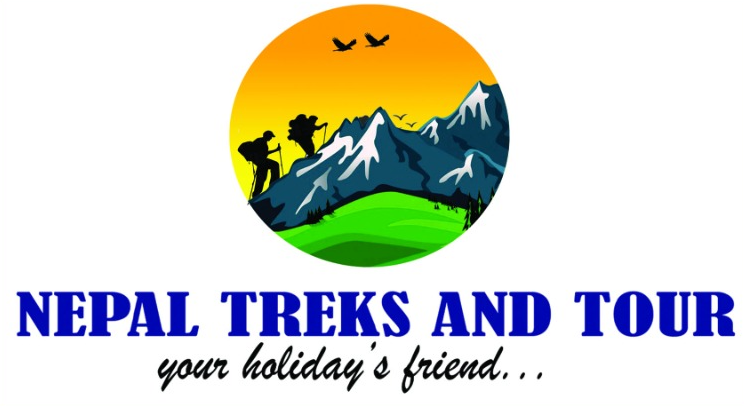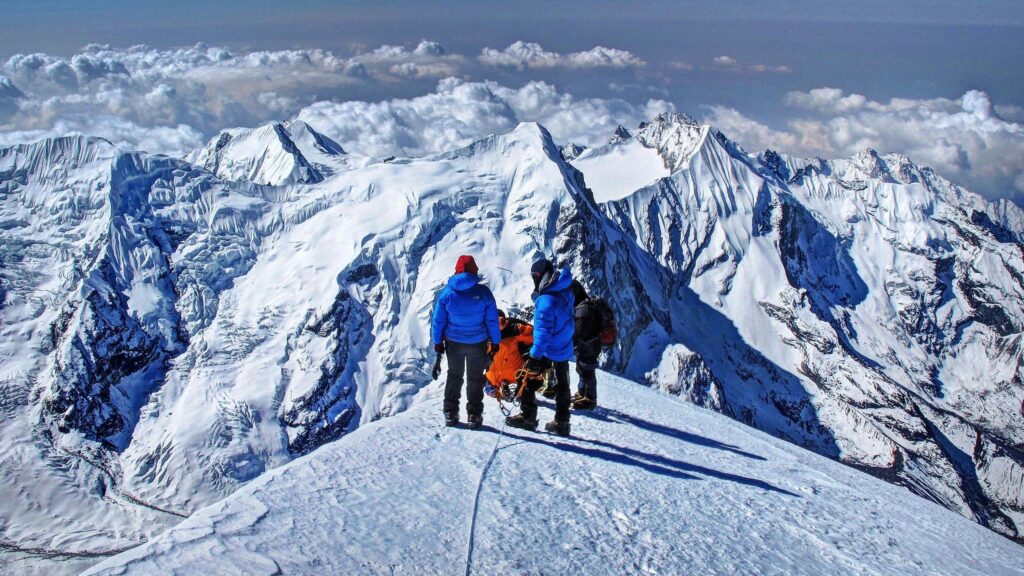Peak Climbing in Nepal offers a thrilling opportunity to scale the majestic Himalayan summits that rise above 5,000 meters, making it a dream for both beginner adventurers and seasoned climbers. From popular and scenic ascents like Island Peak Climbing and Mera Peak Climbing to more Technical Peaks in Nepal, such as Lobuche East and Singu Chuli, the country is home to some of the most iconic and accessible mountaineering experiences in the world. In this guide, Nepal Treks and Tour presents the Top 10 Peaks to Climb in Nepal, highlighting the best routes, difficulty levels, costs, and ideal seasons. Whether you’re looking for Easy Peaks to climb in Nepal or planning a full-scale Nepal Climbing Expedition, this curated list will help you choose the perfect summit for your next adventure.
Mera Peak Climbing (6,476m)
Among the Top 10 Peaks to Climb in Nepal, Mera Peak Climbing stands out as the highest trekking peak officially permitted by the Nepal Mountaineering Association. Located in the remote Hinku Valley of the Everest region, it offers an extraordinary adventure for those seeking a true Nepal Climbing Expedition without extreme technical demands.
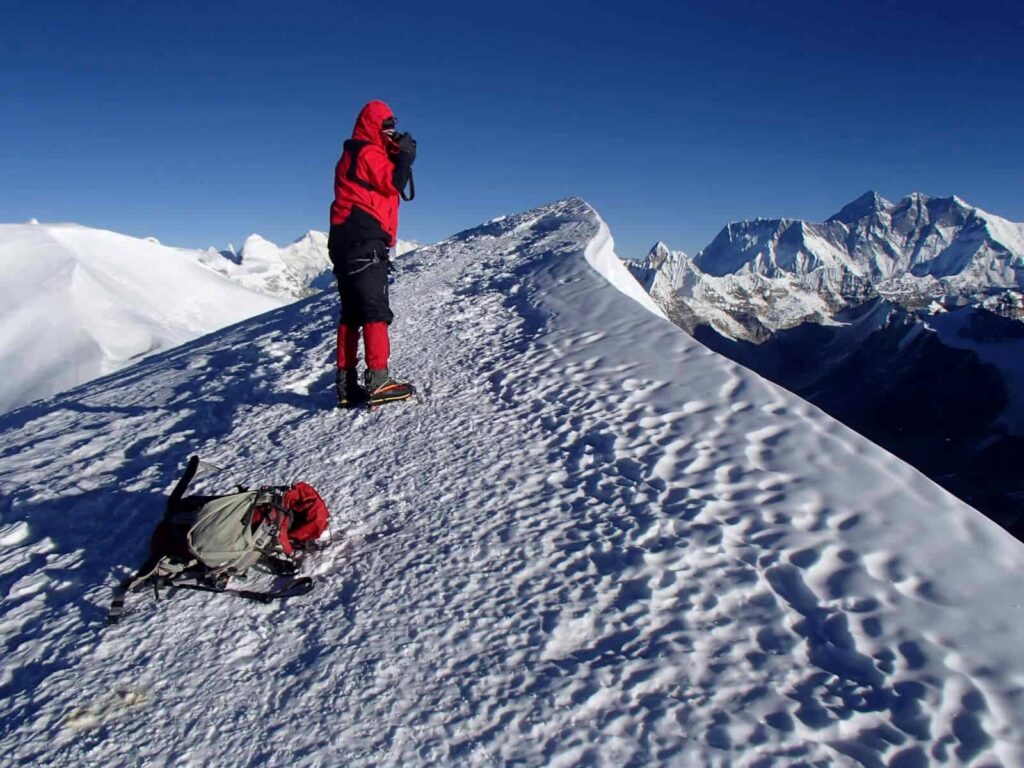
Highlights
- Elevation: 6,476 meters (21,247 feet)
- Region: Hinku Valley, Solukhumbu
- Difficulty: Moderate to challenging (requires glacier walking and use of crampons, rope, and ice axe)
- Best Time for Peak Climbing in Nepal: March–May and September–November
- Duration: 15–18 days, including acclimatization
Why Choose Mera Peak?
- Ideal for those with good fitness, aiming for a high-altitude, non-technical summit
- Less crowded than other Popular Peaks in Nepal for Climbing, providing a more pristine wilderness experience
- Excellent opportunity to combine Trekking and Climbing in Nepal
- Suitable for climbers preparing for higher Technical Peaks in Nepal like Ama Dablam or Baruntse
We ensure a fully guided and safe ascent with expert Sherpa guides, proper acclimatization, and reliable support throughout your Mera Peak Climbing adventure. Whether you are a first-time climber or an experienced trekker looking for your next challenge, Mera is the perfect stepping stone.
Island Peak Climbing (Imja Tse – 6,189m)
Island Peak Climbing, also known as Imja Tse, is one of the most iconic and Popular Peaks in Nepal for Climbing. Towering at 6,189 meters, this peak is located in the Everest region, rising above the Imja Valley and offering stunning close-up views of Lhotse, Ama Dablam, and Makalu.
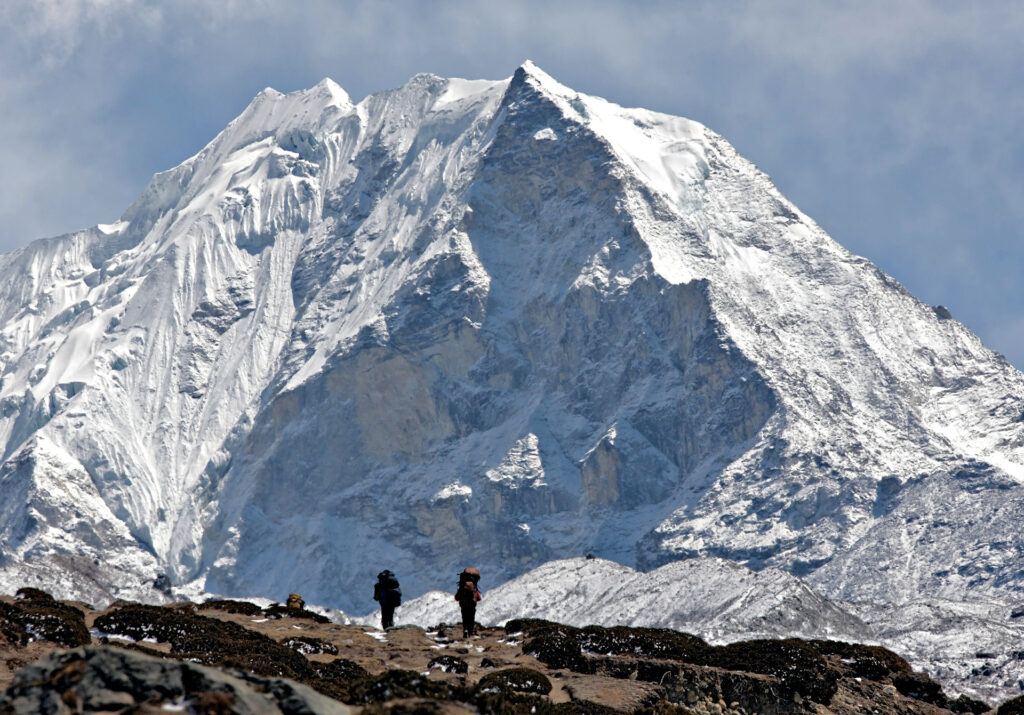
Highlights
- Elevation: 6,189 meters (20,305 feet)
- Region: Everest (Khumbu) Region
- Difficulty: Moderate to technical (requires basic mountaineering skills)
- Best Time for Peak Climbing in Nepal: March–May and September–November
- Duration: 14–18 days (often combined with Everest Base Camp Trek)
Why Choose Island Peak?
- Considered the best entry-level climb in the Nepal Peak Climbing Packages
- Perfect for combining with the Everest Base Camp Trek for acclimatization
- Provides training and experience for future Technical Peaks in Nepal
- A favorite among those doing both Trekking and Climbing in Nepal
Island Peak involves a glacier climb with rope work, crampons, and a short vertical ice wall before the summit ridge—making it a thrilling and rewarding adventure. At Nepal Treks and Tour, our experienced guides and high-altitude climbing Sherpas provide professional training and support to make your Island Peak Climbing experience safe and successful.
Lobuche Peak Climb (Lobuche East – 6,119m)
Among the Top 10 Peaks to Climb in Nepal, Lobuche Peak Climb offers a more technical challenge compared to other Nepal Trekking Peaks like Island or Mera. Located just a few kilometers from Everest Base Camp, Lobuche East provides climbers with an authentic mountaineering experience and some of the most breathtaking alpine views in the Himalayas.
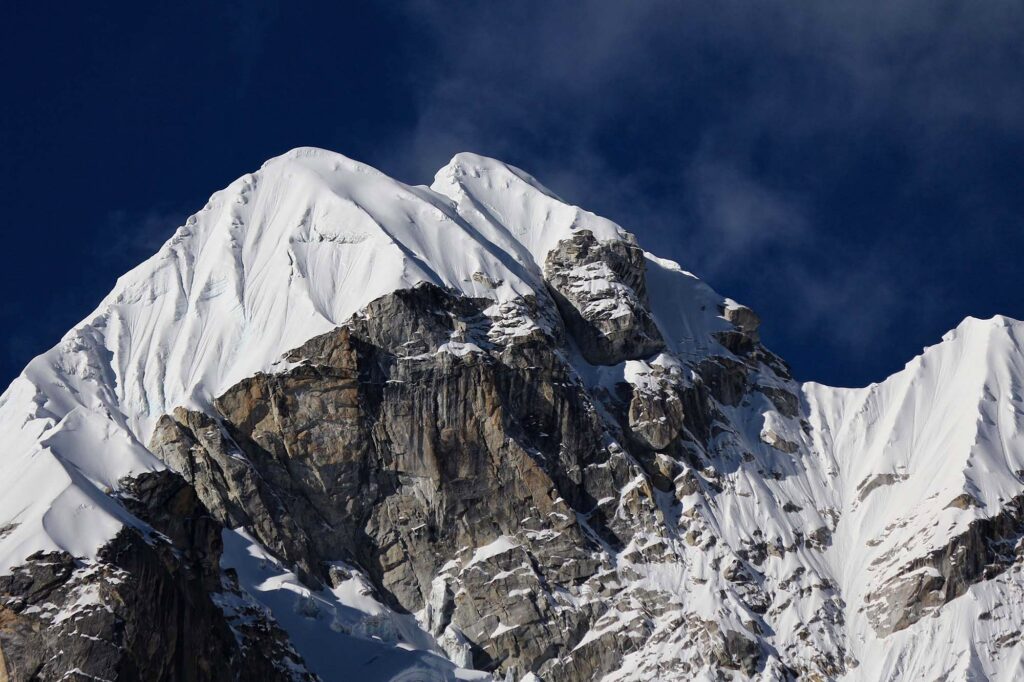
Highlights
- Elevation: 6,119 meters (20,075 feet)
- Region: Khumbu (Everest Region)
- Difficulty: Technical (use of fixed ropes, crampons, ice axe required)
- Best Time for Peak Climbing in Nepal: Spring (March–May) and Autumn (September–November)
- Duration: 16–18 days (often combined with EBC trek)
Why Choose Lobuche East?
- Considered one of the most Technical Peaks in Nepal among trekking peaks
- Offers an authentic Nepal Climbing Expedition feel with ice and rock sections
- Fewer climbers than Island or Mera Peak, making it a more exclusive climb
- Excellent acclimatization if combined with Everest Base Camp or Kala Patthar
For climbers looking to test their alpine skills, the Lobuche Peak Climb is a phenomenal option within our customized Nepal Peak Climbing Packages. At Nepal Treks and Tour, our IFMGA-certified climbing guides ensure that your ascent is conducted with maximum safety, expert route setting, and full technical support.
Pisang Peak Climb (6,091m)
Pisang Peak Climbing is one of the most popular adventures in the Annapurna region and is a top choice for those seeking both breathtaking scenery and a moderate climbing challenge. Towering above the picturesque Upper Pisang village, Pisang Peak is a classic option among the Top 10 Peaks to Climb in Nepal, and a favorite in many Nepal Peak Climbing Packages.
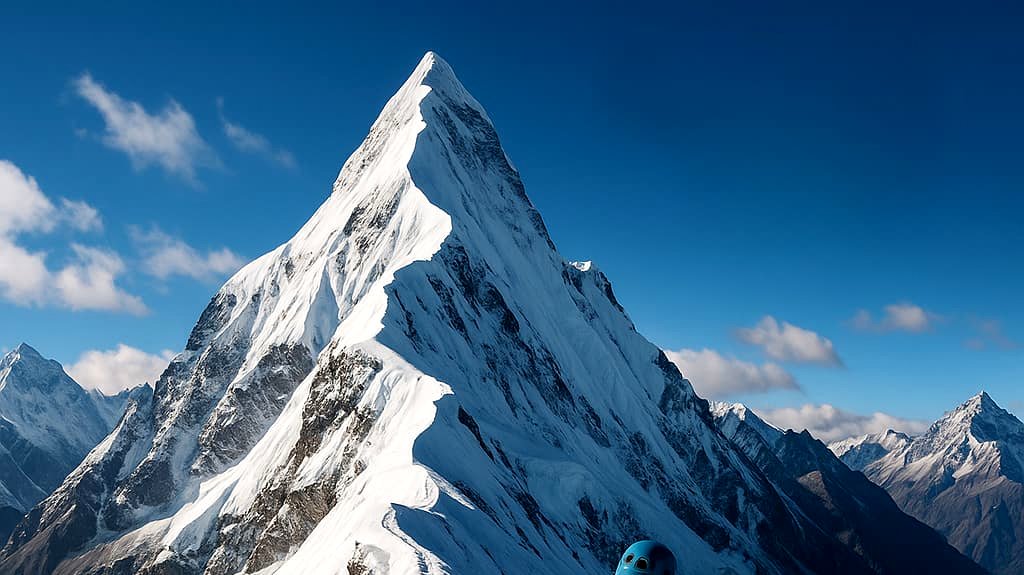
Highlights
- Elevation: 6,091 meters (19,984 feet)
- Region: Annapurna Region (Manang District)
- Difficulty: Moderate (snow slopes and ridge walking; basic climbing gear required)
- Best Time for Peak Climbing in Nepal: Spring (Mar–May) and Autumn (Sep–Nov)
- Duration: 18–20 days (including acclimatization and trek)
Why Choose Pisang Peak?
- Offers a perfect introduction to Trekking and Climbing in Nepal
- Can be combined with the Annapurna Circuit Trek, enhancing both cultural and natural exposure
- Less technical than peaks like Lobuche or Chulu West, yet still rewarding
- Popular among those seeking Easy Peaks to Climb in Nepal with a bit of adventure
At Nepal Treks and Tour, we offer professionally guided expeditions to Pisang Peak, ensuring climbers are well-acclimatized, trained, and equipped for success. Our itineraries integrate gradual elevation gain, rest days, and scenic exploration of ancient Manangi villages and alpine lakes.
Chulu West Peak Climbing (6,419m)
Chulu West Peak Climbing is one of the most exhilarating and demanding adventures among the Top 10 Peaks to Climb in Nepal. Situated in the Annapurna region, near the historic Manang Valley, this peak offers an unforgettable blend of Himalayan grandeur, technical mountaineering, and cultural richness.
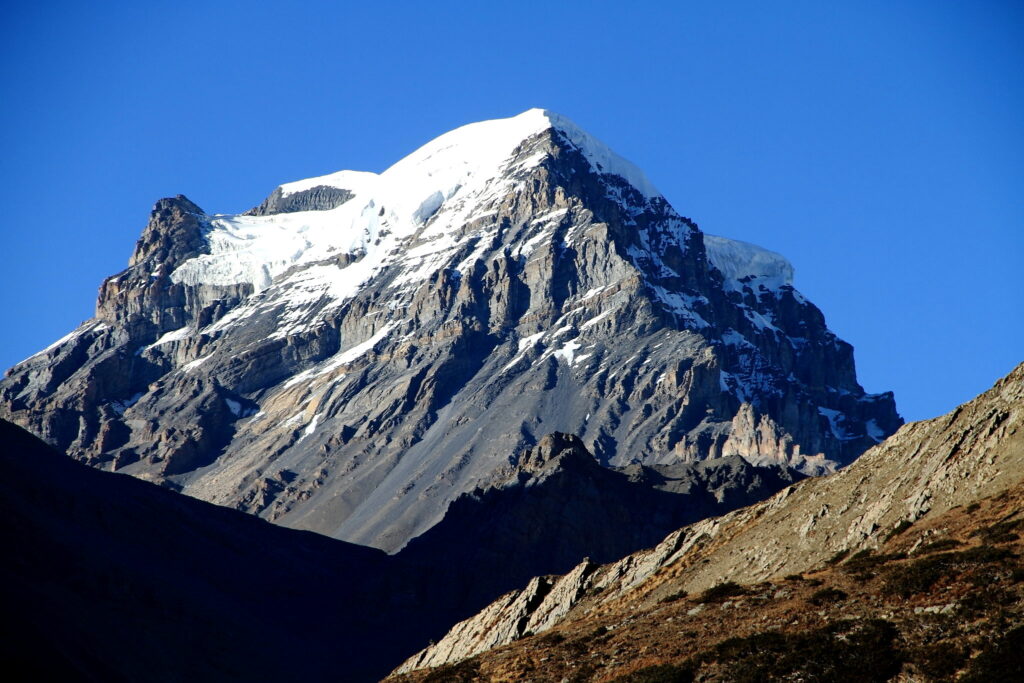
Highlights
- Elevation: 6,419 meters (21,059 feet)
- Region: Annapurna Region (Manang District)
- Difficulty: High – requires previous mountaineering experience
- Best Time for Peak Climbing in Nepal: March to May and September to November
- Duration: 20–22 days (often combined with Annapurna Circuit)
Why Choose Chulu West?
- Considered one of the most rewarding climbs among Nepal Trekking Peaks
- Ideal for experienced climbers aiming to upgrade their Nepal Climbing Expedition skills
- Pairs perfectly with the Annapurna Circuit Trek for a culturally immersive and scenic approach
- Less crowded than other Popular Peaks in Nepal for Climbing, offering peace and raw adventure
While not suitable for beginners, Chulu West is a prized ascent for those with prior experience in Trekking and Climbing in Nepal. At Nepal Treks and Tour, we provide expert guides, high-altitude porters, and comprehensive training to ensure that your Chulu West Peak Climbing journey is safe, successful, and deeply fulfilling.
Yala Peak Climbing (5,700m)
For those new to mountaineering, Yala Peak Climbing is one of the most accessible and rewarding introductions to Peak Climbing in Nepal. Located in the heart of the Langtang Valley, within Langtang National Park, Yala Peak is an excellent choice among the Easy Peaks to Climb in Nepal that still deliver stunning Himalayan views and rich cultural experiences.
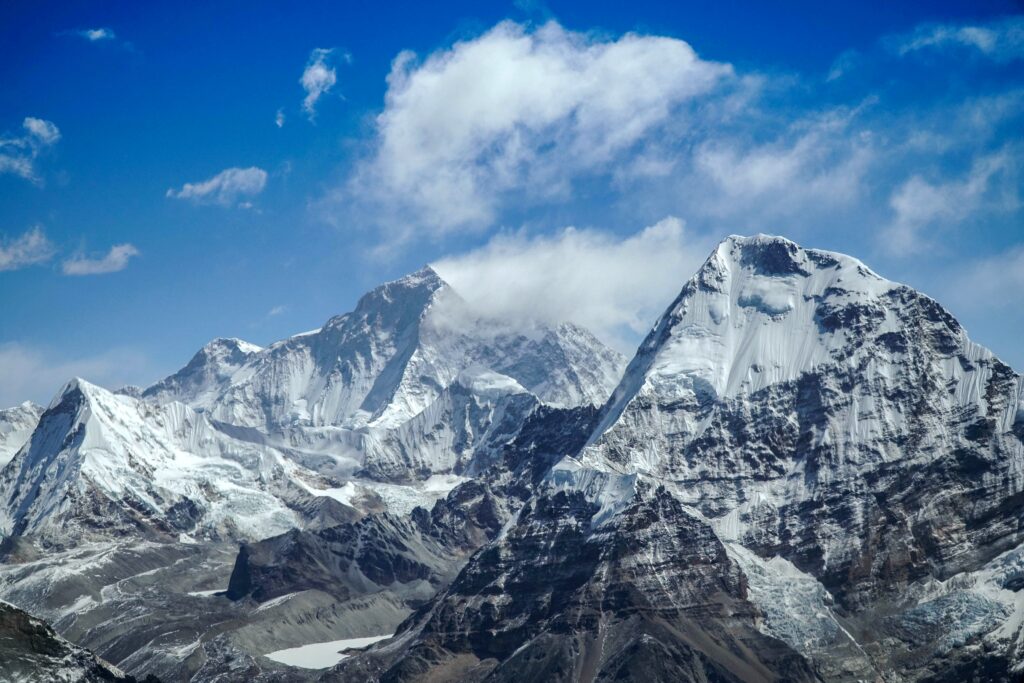
Highlights
- Elevation: 5,700 meters (18,700 feet)
- Region: Langtang Region
- Difficulty: Easy to moderate – ideal for beginners
- Best Time for Peak Climbing in Nepal: Spring (March–May) and Autumn (September–November)
- Duration: 12–14 days, including acclimatization
Why Choose Yala Peak?
- Perfect for beginners seeking to start their Trekking and Climbing in Nepal journey
- No prior climbing experience required
- Combined with the scenic and culturally rich Langtang Valley Trek
- One of the most affordable and straightforward climbs in all Nepal Peak Climbing Packages
Whether you’re a first-timer or looking for a short yet scenic climb, Yala Peak is a fantastic option within the Top 10 Peaks to Climb in Nepal, blending natural beauty, cultural immersion, and Himalayan adventure.
Parchamo Peak Climbing (6,187m)
Tucked away in the pristine and less-trodden Rolwaling Valley, Parchamo Peak Climbing is an adventurous ascent ideal for trekkers seeking a more off-the-beaten-path Peak Climbing in Nepal experience. This elegant pyramid-shaped peak, located near the famous Tashi Lapcha Pass, offers a thrilling journey through one of the most secluded regions of the Himalayas.
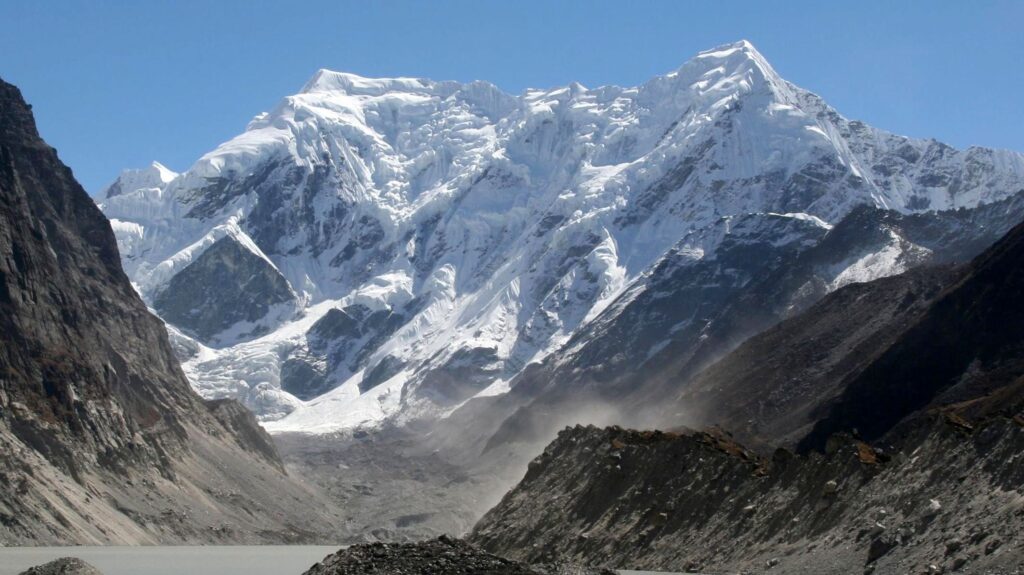
Highlights
- Elevation: 6,187 meters (20,298 feet)
- Region: Rolwaling Region (bordering Khumbu and Everest)
- Difficulty: Moderate to technical – includes glacier travel and steep snow climbs
- Best Time for Peak Climbing in Nepal: Spring (March–May) and Autumn (September–November)
- Duration: 18–22 days (often linked with Tashi Lapcha Pass or Everest region exit)
Why Choose Parchamo Peak?
- Excellent choice for climbers seeking a remote and less-commercialized Nepal Climbing Expedition
- Offers dramatic views of Gauri Shankar, Melungtse, and peaks in both Rolwaling and Everest regions
- Ideal for experienced trekkers wanting to graduate to Technical Peaks in Nepal
- Combines seamlessly with the adventurous Trekking and Climbing in Nepal across wild landscapes
At Nepal Treks and Tour, we specialize in guiding climbers safely through high alpine passes, crevassed glaciers, and snowy ridges to the summit of Parchamo Peak. This climb is ideal for those who’ve done peaks like Island or Mera, and are ready for something more challenging and less traveled.
Tent Peak Climbing (Tharpu Chuli – 5,663m)
Tent Peak Climbing, also known as Tharpu Chuli, is a classic trekking peak nestled deep within the stunning Annapurna Sanctuary. Ideal for climbers seeking a blend of scenic trekking and alpine climbing, Tent Peak is a top contender among the Top 10 Peaks to Climb in Nepal, especially for those aiming to summit their first Himalayan peak.
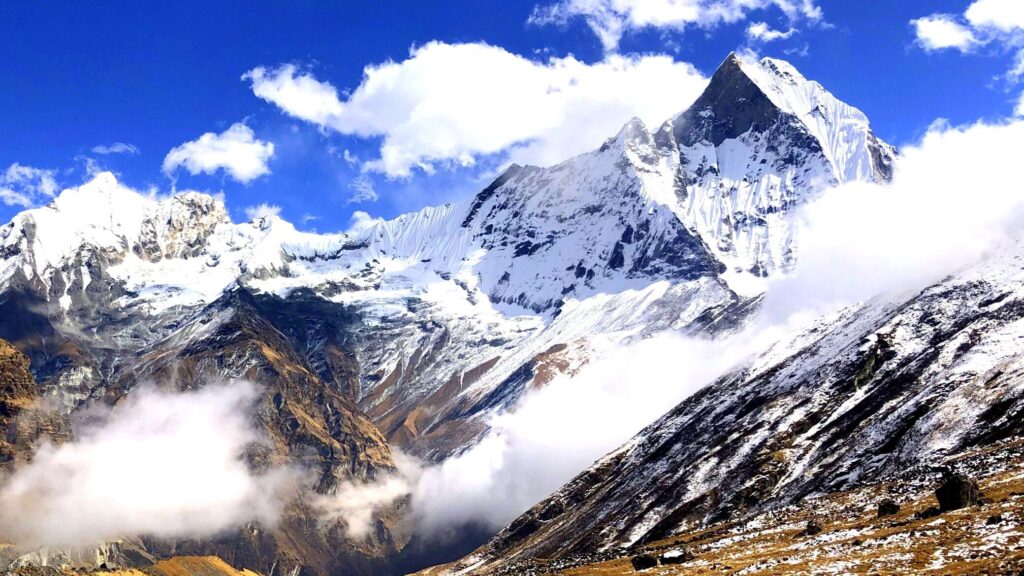
Highlights
- Elevation: 5,663 meters (18,575 feet)
- Region: Annapurna Sanctuary
- Difficulty: Moderate – involves snow climbing and basic mountaineering gear
- Best Time for Peak Climbing in Nepal: Spring (March–May) and Autumn (September–November)
- Duration: 16–18 days (usually combined with Annapurna Base Camp trek)
Why Choose Tent Peak?
- Ideal for those combining Trekking and Climbing in Nepal
- Less technical than Chulu West or Lobuche, but still a real mountaineering experience
- Summit offers 360° views of the Annapurna Himalayan range
- Considered one of the most scenic and Easy Peaks to Climb in Nepal for beginners
At Nepal Treks and Tour, we offer professionally guided ascents to Tent Peak, providing proper acclimatization, mountaineering training, and all logistics to ensure a safe and successful summit. This climb is particularly popular with trekkers who want to elevate their adventure after reaching Annapurna Base Camp.
Singu Chuli Peak Climbing (6,501m)
Also known as the Fluted Peak, Singu Chuli Peak Climbing is one of the most technical and striking climbs among the Top 10 Peaks to Climb in Nepal. Towering at 6,501 meters, it lies within the majestic Annapurna Sanctuary, near Tent Peak and Tharpu Chuli, offering a dramatic mountaineering experience for those seeking a real challenge in Peak Climbing in Nepal.
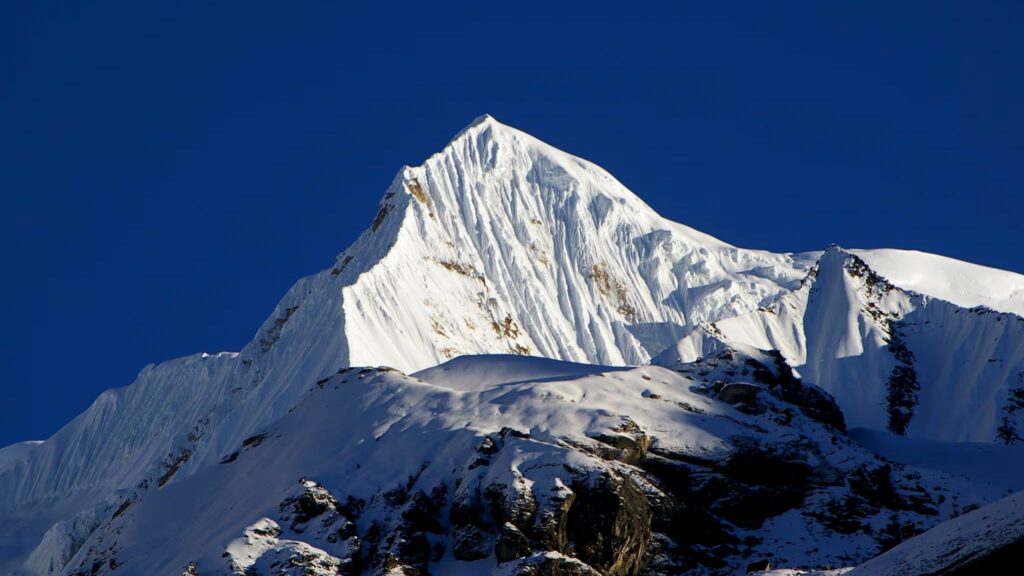
Highlights
- Elevation: 6,501 meters (21,329 feet)
- Region: Annapurna Region (Annapurna Sanctuary)
- Difficulty: High – technical; requires use of ropes, crampons, and ice axe
- Best Time for Peak Climbing in Nepal: March–May and September–November
- Duration: 18–21 days (often integrated with Annapurna Base Camp trek)
Why Choose Singu Chuli?
- One of the most challenging and rewarding climbs in the Nepal Climbing Expedition category
- Requires proper mountaineering experience and acclimatization
- Perfect for climbers who have already summited Island Peak, Tent Peak, or Mera Peak
- Offers breathtaking views of Annapurna I, Machhapuchhre, Hiunchuli, and Glacier Dome
At Nepal Treks and Tour, we provide comprehensive support, expert climbing Sherpas, and all the technical gear required for a safe and successful ascent of Singu Chuli Peak. This peak is an ideal goal for climbers looking to transition from trekking peaks to more advanced Trekking and Climbing in Nepal.
Naya Khang Peak Climbing (5,844m)
Naya Khang Peak Climbing is a fantastic option for those seeking a quieter, off-the-beaten-path Peak Climbing in Nepal experience. Nestled within the beautiful Langtang Valley, this peak stands at 5,844 meters and offers a moderately challenging yet incredibly scenic climb for both beginners and intermediate mountaineers.
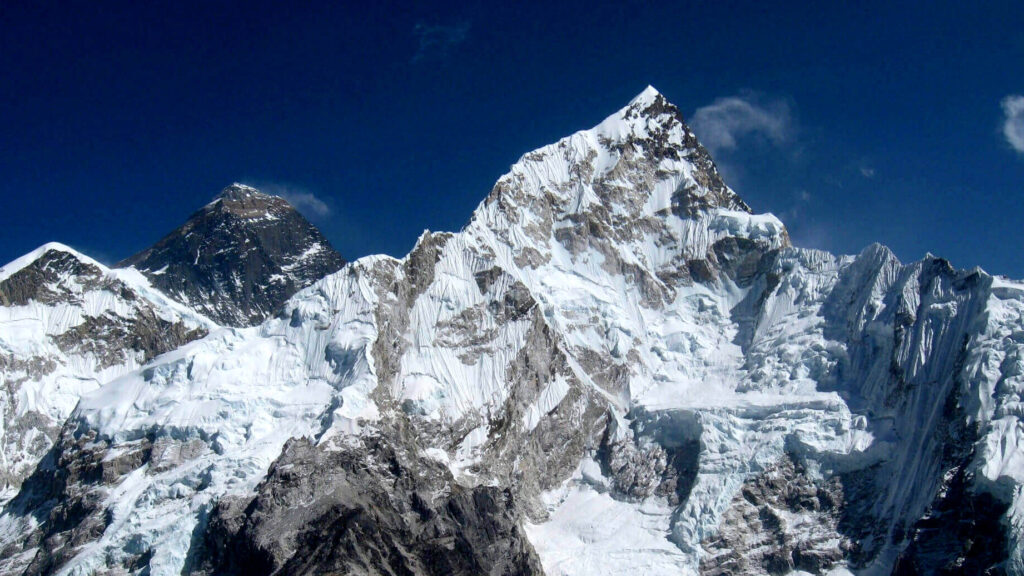
Highlights
- Elevation: 5,844 meters (19,173 feet)
- Region: Langtang National Park
- Difficulty: Moderate – involves snow slopes, glacier travel, and basic ropework
- Best Time for Peak Climbing in Nepal: March–May and September–November
- Duration: 14–17 days, including acclimatization
Why Choose Naya Khang?
- Excellent for beginners progressing into Trekking and Climbing in Nepal
- Located in the stunning Langtang region, offering solitude and serenity
- Great alternative to Yala Peak for those wanting slightly more challenge
- Offers spectacular views of Langtang Lirung, Shishapangma, and Dorje Lakpa
At Nepal Treks and Tour, our guided ascents of Naya Khang Peak combine technical safety, cultural exploration, and natural immersion. Whether you’re new to mountaineering or looking for a quieter, more spiritual journey through the Himalayas, Naya Khang is a worthy inclusion in your adventure bucket list and a valuable part of any Nepal Peak Climbing Package.
Preparing for Peak Climbing in Nepal
Peak Climbing in Nepal is an exhilarating blend of adventure, endurance, and Himalayan grandeur. Whether you’re attempting a beginner-friendly summit like Yala Peak or challenging yourself with a technical climb like Chulu West or Singu Chuli, proper preparation is crucial for safety and success. At Nepal Treks and Tour, we ensure every climber is fully equipped and informed before taking on any of the Top 10 Peaks to Climb in Nepal.
Physical Fitness & Training
Most Nepal Trekking Peaks require good cardiovascular fitness, leg strength, and stamina. For more Technical Peaks in Nepal, additional core strength and flexibility are essential.
- Begin endurance training 8–12 weeks before departure
- Include hiking, stair climbing, and weighted backpack walks
- For technical peaks, practice climbing, abseiling, and using crampons and ice axe
Gear & Equipment
While we provide most climbing equipment as part of our Nepal Peak Climbing Packages, it’s important to have your own high-quality personal gear:
- Mountaineering boots (double boots for >6,000m peaks)
- Down jacket and sleeping bag (–20°C rated)
- Layered clothing for changing mountain weather
- Headlamp, trekking poles, sunglasses, and gloves
- Personal first aid kit and water purification tablets
Acclimatization & Altitude Awareness
Many of the Popular Peaks in Nepal for Climbing rise above 5,500 meters, where altitude sickness can become a serious risk.
- Always include acclimatization days in your itinerary
- Follow the “climb high, sleep low” principle
- Stay well-hydrated and avoid alcohol during ascent
- Know the symptoms of AMS (Acute Mountain Sickness) and communicate with your guide
Climbing Skills & Practice
Even if you’re targeting Easy Peaks to Climb in Nepal like Island Peak or Mera Peak, you’ll need to learn:
- Basic rope techniques and knot tying
- Use of ice axe, crampons, and harness
- Safety procedures like glacier rescue and fixed rope ascending
Our team at Nepal Treks and Tour conducts pre-climb training in the mountains to ensure you are fully confident before your summit push.
Permits & Documentation
Depending on the peak, you’ll need:
- NMA Climbing Permit
- TIMS Card
- National Park or Conservation Area Permits
We handle all logistics and paperwork as part of our Trekking and Climbing in Nepal services.
Travel Insurance
A comprehensive insurance policy is essential. Make sure it covers:
- High-altitude trekking and climbing (up to 6,500m or higher)
- Emergency evacuation by helicopter
- Medical and trip cancellation coverage
Mental Preparation
- Mountaineering is as much a mental challenge as a physical one. Be prepared for long days, changing weather, and limited comforts. Keep your goals clear and your mindset strong — the summit is always earned, never given.
At Nepal Treks and Tour, we guide you through every step of the journey — from training tips to summit success. With the right preparation, even the tallest and most technical Nepal Climbing Expeditions become an achievable and life-changing experience.
10 Best Peak Climbing in Nepal – FAQs
Q: What is Peak Climbing in Nepal?
A: Peak Climbing in Nepal refers to the ascent of trekking peaks ranging from 5,500 to 6,600 meters, permitted by the Nepal Mountaineering Association (NMA). These peaks are ideal for both novice and experienced climbers seeking to combine trekking with alpine climbing in the Himalayas.
Q: Which are the Top 10 Peaks to Climb in Nepal?
A: The Top 10 Peaks to Climb in Nepal include:
- Island Peak (6,189m)
- Mera Peak (6,476m)
- Lobuche East (6,119m)
- Pisang Peak (6,091m)
- Chulu West (6,419m)
- Yala Peak (5,700m)
- Parchamo Peak (6,187m)
- Tent Peak / Tharpu Chuli (5,663m)
- Singu Chuli (6,501m)
- Naya Khang Peak (5,844m)
Q: Do I need prior climbing experience for Nepal Peak Climbing Packages?
A: Not necessarily. Some Easy Peaks to Climb in Nepal like Yala Peak, Tent Peak, and Island Peak are suitable for beginners. However, peaks like Chulu West, Singu Chuli, and Lobuche East require previous mountaineering experience and technical skills.
Q: What permits are required for Peak Climbing in Nepal?
A: Depending on the peak, you’ll need:
- Climbing Permit from the NMA
- TIMS Card (Trekkers’ Information Management System)
- National Park/Conservation Area Entry Permits
All necessary permits are handled by Nepal Treks and Tour.
Q: What is the Best Time for Peak Climbing in Nepal?
A: The Best Time for Peak Climbing in Nepal is:
- Spring (March to May): Stable weather, excellent visibility, and warmer temperatures
- Autumn (September to November): Clear skies, dry trails, and fewer weather-related issues
Avoid the monsoon (June–August) and extreme winter (December–February) unless you are an expert.
Q: How difficult is Peak Climbing compared to trekking?
A: Peak Climbing is more physically and technically demanding than regular Trekking in Nepal. It involves glacier travel, rope work, use of crampons and ice axe, and high-altitude exposure. Physical fitness, acclimatization, and guidance are critical.
Q: How much does it cost to climb a peak in Nepal?
A: The Cost of Peak Climbing in Nepal ranges based on peak difficulty and services included:
- The price typically includes permits, accommodation, food, guide, porters, and climbing gear.
Q: What gear is required for the Nepal Climbing Expedition?
A: Essential gear includes:
- Climbing boots, crampons, ice axe, harness
- Helmet, rope, carabiners, ascenders
- Warm clothing, down jacket, gloves, sleeping bag
Nepal Treks and Tour provides group gear and rental options for personal gear.
Q: Are there risks involved in Peak Climbing?
A: Yes, risks include:
- Altitude sickness
- Weather changes
- Falls or injuries on technical terrain
Our trained guides monitor health, use proper safety protocols, and carry emergency equipment.
Q: Why choose Nepal Treks and Tour for Peak Climbing in Nepal?
A: With certified guides, years of experience, and personalized service, Nepal Treks and Tour is a trusted name for safe, enjoyable, and successful Nepal Peak Climbing Packages. We handle all logistics, training, and safety so you can focus on reaching the summit.
If you need any further information, please feel free to contact us via email at [email protected] or by phone/WhatsApp at +977-9851013072.
